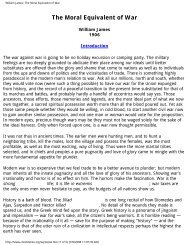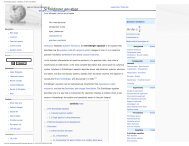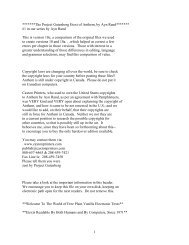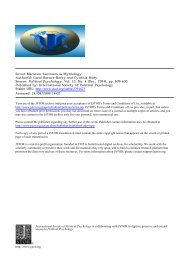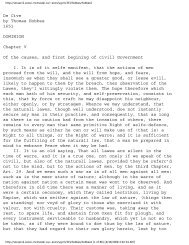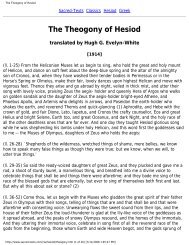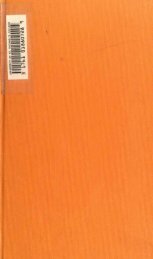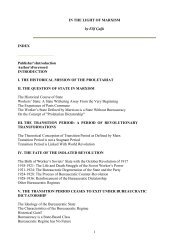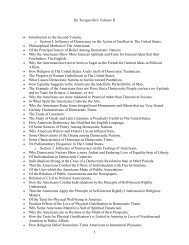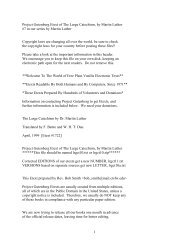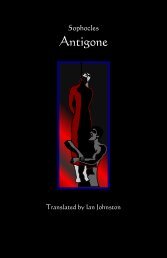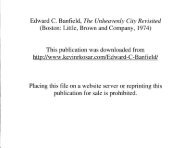Thomas Jefferson: A Manual of Parliamentary Practice
Thomas Jefferson: A Manual of Parliamentary Practice
Thomas Jefferson: A Manual of Parliamentary Practice
Create successful ePaper yourself
Turn your PDF publications into a flip-book with our unique Google optimized e-Paper software.
<strong>Thomas</strong> <strong>Jefferson</strong>: A <strong>Manual</strong> <strong>of</strong> <strong>Parliamentary</strong> <strong>Practice</strong><br />
where it stands, and another for inserting it in the place desired.<br />
A bill passed by the one House with blanks. These may be filled up by the other; by way <strong>of</strong><br />
amendments, returned to the first as such and passed. 3 Hats. 83.<br />
The number prefixed to the section <strong>of</strong> a bill, being merely a marginal indication, and no part <strong>of</strong><br />
the text <strong>of</strong> the bill, the clerk regulates that, the House or committee is only to amend the text.<br />
SEC. XXXVI.<br />
DIVISION OF THE QUESTION.<br />
IF a question contain more parts than one, it may be divided into two or more questions.<br />
Mem. in Hakew. 29. But not as the right <strong>of</strong> an individual member, but with the consent <strong>of</strong> the<br />
House. For who is to decide whether a question is complicated or not where it is<br />
complicated into how many propositions it may be divided The fact is, that the only mode <strong>of</strong><br />
separating a complicated question is, by moving amendments to it; and these must be decided<br />
by the House on a question, unless the House orders it to be divided: as on the question<br />
December 2, 1640, making void the election <strong>of</strong> the knights for Worcester, on a motion, it was<br />
resolved, to make two questions <strong>of</strong> it, to wit, one on each knight. 2 Hats. 85, 86. So wherever<br />
there are several names in a question, they may be divided and put one by one. 9 Grey 444.<br />
So 1729, April 17, on an objection that a question was complicatd, it was separated by<br />
amendment. 2 Hats. 79, 5.<br />
The soundness <strong>of</strong> these observations will be evident from the embarrassments produced by<br />
the 10th rule <strong>of</strong> the Senate, which says, "if the question in debate contain several<br />
points, any member may have the same divided."<br />
1798, May 30, the Alien Bill in quasi-committee. To a section and proviso in the<br />
original, had been added two new provisoes by way <strong>of</strong> amendment. On a motion to<br />
strike out the section as amended, the question was desired to be divided. To do<br />
this, it must be put first on striking out either the former proviso, or some distinct<br />
member <strong>of</strong> the section. But when nothing remains but the last member <strong>of</strong> the<br />
section, and the provisoes, they cannot be divided so as to put the last member to<br />
question by itself; for the provisoes might thus be left standing alone, as<br />
exceptions to a rule, when the rule is taken away; or the new provisoes might be<br />
left to a second question, after having been decided on once before at the same<br />
reading; which is contrary to rule. But the question must be on striking out the last<br />
member <strong>of</strong> the section as amended. This sweeps away the exceptions with the<br />
rule, and relieves from inconsistence. A question to be divisible, must comprehend<br />
points so distinct and entire, that one <strong>of</strong> them being taken away, the other may<br />
stand entire. But a proviso or exception, without an enacting clause, does not<br />
contain an entire point or proposition.<br />
http://www.constitution.org/tj/tj-mpp.htm (44 <strong>of</strong> 70) [4/14/2008 6:37:46 PM]



